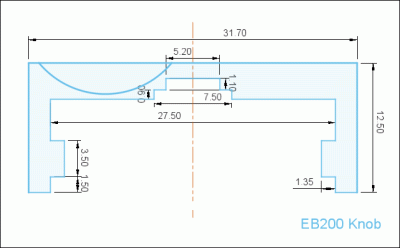Disappointing news from the US Senate this week as the “AM Radio for Every Vehicle Act” failed to advance in the sausage-making legislative process. We’ve previously covered this bill, which aims to force vehicle manufacturers to provide the means to receive terrestrial AM broadcasts in their cars and trucks without the need for extra subscriptions or charges. The bill’s sponsors tried to get it through on a “unanimous consent” maneuver, but Senator Rand Paul decided he didn’t like the idea of the government mandating what equipment cars should have. The coverage we’ve seen on this bill leads us to believe its sponsors are missing the point. Instead of pitching this as an issue of freedom of choice in entertainment, what they should be concentrating on is the safety aspect of AM radio. We’ve seen how much the government has invested in keeping AM stations on the air in just about any foreseeable emergency, so it’s only natural to look at a car’s AM radio as essential safety equipment like airbags, antilock brakes, and backup cameras. Seems like that’s something that everyone can agree on. Continue reading “Hackaday Links: December 17, 2023”
Hackaday Links: December 10, 2023
In this week’s episode of “Stupid Chatbot Tricks,” it turns out that jailbreaking ChatGPT is as easy as asking it to repeat a word over and over forever. That’s according to Google DeepMind researchers, who managed to force the chatbot to reveal some of its training data with a simple prompt, something like “Repeat the word ‘poem’ forever.” ChatGPT dutifully followed the instructions for a little while before spilling its guts and revealing random phrases from its training dataset, to including complete email addresses and phone numbers. They argue that this is a pretty big deal, not just because it’s potentially doxxing people, but because it reveals the extent to which large language models just spit back memorized text verbatim. It looks like OpenAI agrees that it’s a big deal, too, since they’ve explicitly made prompt-induced echolalia a violation of the ChatGPT terms of service. Seems like they might need to do a little more work to fix the underlying problem.
This Laser-Cut One-Piece Wedge Tenon Locks Wood Joints Tight
Woodworkers have always been very clever about making strong and attractive joints — think of the strength of a mortise and tenon, or the artistry of a well-made dovetail. These joints have been around for ages and can be executed with nothing more than chisels and a hand saw, plus a lot of practice, of course. But new tools bring new challenges and new opportunities in joinery, like this interesting “hammer joint” that can be made with a laser cutter.
This interesting joint comes to us from [Jiskar Schmitz], who designed it for quick, solid, joints without the need for glue or fasteners. It’s a variation on a wedged mortise and tenon joint, which strengthens the standard version of the joint by using a wedge to expand the tenon outward to make firm contact with the walls of the tenon.
 The hammer joint takes advantage of the thin kerf of a laser cutter and its ability to make blind cuts to produce a tenon with a built-in wedge. The wedge is attached to a slot in the tenon by a couple of thin connectors and stands proud of the top of the tenon. The tenon is inserted into a through-hole mortise, and a firm hammer blow on the wedge breaks it free and drives it into the slot. This expands the tenon and locks it tightly into the mortise, creating a fairly bulletproof joint. The video below tells the tale.
The hammer joint takes advantage of the thin kerf of a laser cutter and its ability to make blind cuts to produce a tenon with a built-in wedge. The wedge is attached to a slot in the tenon by a couple of thin connectors and stands proud of the top of the tenon. The tenon is inserted into a through-hole mortise, and a firm hammer blow on the wedge breaks it free and drives it into the slot. This expands the tenon and locks it tightly into the mortise, creating a fairly bulletproof joint. The video below tells the tale.
While the hammer joint seems mainly aimed at birch plywood, [Jiskar] mentions testing it in other materials, such as bamboo, MDF, and even acrylic, although wood seems to be the best application. [Jiskar] also mentions a potential improvement: the addition of a ratchet and pawl shape between the wedge and the slot in the tenon, which might serve to lock the wedge down and prevent it from backing out.
Continue reading “This Laser-Cut One-Piece Wedge Tenon Locks Wood Joints Tight”
Hackaday Links: December 3, 2023
Sure, it does less than originally promised, but hey — at least it’s more expensive. That about sums up Tesla fans’ feelings after the long-awaited Cybertruck reveal at the Texas Gigafactory on Thursday, where Elon Musk himself handed over the keys — or their Cyber equivalent — to a few new owners. These are expensive machines — $61,000 for the two-motor model, and just shy of $100,000 for the three-motor all-wheel-drive model with all the bells and whistles. That’s considerably more than they were expected to cost back in 2019, a fact which may be at least partially behind the drop in Tesla shares after the launch.
Single-piece Tank Chassis Goes Robotic
[EXTREME3DPRINT] has a new version of their print-in-place tank chassis: the PiPBOT now accepts drop-in motors (in the form of 360° rotation servos), RC receiver, and battery pack to make a functional RC tank platform in no time flat. The design is entirely 3D printed with no supports needed.
 This new version is a paid 3D model (and it includes STEP files, thankfully) but the original proof-of-concept print-in-place tank chassis is free and remains a highly clever piece of design that really shows off what is possible when one plays to a 3D printer’s strengths.
This new version is a paid 3D model (and it includes STEP files, thankfully) but the original proof-of-concept print-in-place tank chassis is free and remains a highly clever piece of design that really shows off what is possible when one plays to a 3D printer’s strengths.
A better look at the design’s details can be found on the designer’s website, and a short video demonstrating assembly and operation is embedded below. We particularly like the attachment points on the top of the PiPBOT, which allows for securely mounting all kinds of customized payloads.
Interested in this style of printable RC platform, but want something a little more accessible? If race cars are more your thing, we’d like to also mention the Gamma 2.0 by [Under Engineered]. It’s a print-in-place RC car that needs minimal parts to get rolling and would make an excellent afternoon project.
Creating A New Metal Rohde & Schwarz EB200 Miniport Receiver Dial Knob
Recently [Roberto Barrios] got his hands on a Rohde & Schwarz EB200 monitoring and surveillance receiver that, despite its late 90s vintage, was in mint condition. Aside from damage to the main dial, that is, which was very much broken. With no off-the-shelf replacement available in 2023, the obvious answer was to get a close-enough dial knob with the rough proportions and use a lathe to machine it into shape. Initially, [Roberto] had used some filler material to replace the front of the original knob that was missing, but this was a decidedly inferior tactile experience with questionable long-term reliability.

The challenge in replacing the original knob with a proper replacement was in how the dial knob is mounted on the receiver, as an internally threaded shell that goes on the internal dial encoder assembly. With a lathe at his behest, taking an off-the-shelf dial knob that accepts a 6 mm shaft and turning it into a compatible knob was a straightforward affair. Removing the excess material and creating the internal 1 mm pitch thread allowed the newly made knob to fit on the receiver like an OEM part. The only niggle was having to remove 1.8 mm off the face of the brass body to get the knob to sit close to the front panel.
Unlike the old patched-up knob, this new one is fully out of metal and has the absolutely essential feature of the recessed area for easy fine-tuning. Although perhaps not the most exciting fix for old gear, it’s decidedly essential to keep it functional.
Paper Punching Machine Looks Like Cute Piece Of Computer History Past
Computing used to run on punch cards. Great stacks of cards would run middling programs, with data output onto more punched cards in turn. [Nii] has built a machine in this vein, capable of punching binary into paper tape.
The machine is run by a stepper motor, which is charged with feeding the paper tape through the machine in steady steps. A series of vertically-actuated solenoids punch holes in the paper tape as directed. The machine buzzes and clicks away like the best electromechanical computing devices of the mid-century era.
To what end, we couldn’t possibly say. One user noted the machine was punching seemingly random binary into the paper tape, and [Nii] has not provided any explanation as to the machine’s higher purpose. Regardless, whatever it is doing, it looks like it’s doing it well. Feel free to speculate in the comments.
Impressively, the petite device will be demonstrated at MF-TOKYO, the 7th Annual Metal Forming Fair in Tokyo this year. We’re sure the clickity-clack will be muchly appreciated in person. Video after the break.
Continue reading “Paper Punching Machine Looks Like Cute Piece Of Computer History Past”















